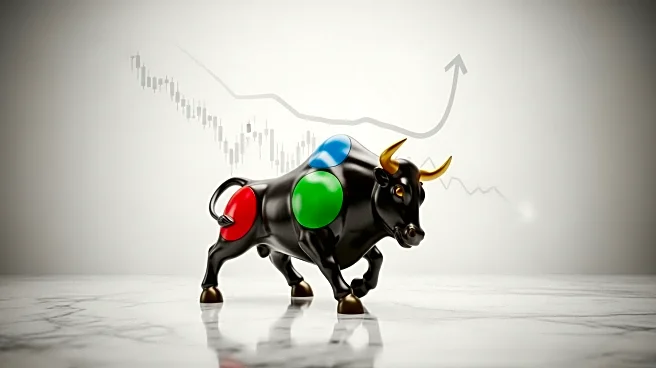What's Happening?
Ethereum's price is experiencing a downturn, with current trading patterns indicating a potential drop to $3,950 over the weekend. The cryptocurrency's daily chart shows a retreat into the TBO Cloud after failing to maintain short-term resistance levels. On the 4-hour timeframe, a third clustered TBO Close Long has appeared, which is typically a bearish sign in a tight range. This suggests continued underperformance relative to Bitcoin, as the ETH/BTC pair remains in bearish consolidation. Market dynamics are further influenced by stablecoin dominance, which is exerting pressure on altcoins.
Why It's Important?
The potential decline in Ethereum's price could have significant implications for investors and the broader cryptocurrency market. A drop in Ethereum's value may lead to increased selling pressure on altcoins, affecting market stability and investor confidence. As Ethereum is a major player in the crypto space, its performance can influence market sentiment and trading strategies. Investors may need to reassess their portfolios and consider risk management strategies to mitigate potential losses. The situation underscores the volatility inherent in cryptocurrency markets and the need for careful analysis and strategic planning.
What's Next?
If Ethereum's price continues to decline, it may trigger a broader market correction, impacting other cryptocurrencies and investor sentiment. Stakeholders will likely monitor technical indicators closely to anticipate further movements and adjust their strategies accordingly. The bearish signals suggest that investors should define clear scaling-out strategies and rely on volume and RSI signals for decision-making. The market may also see increased interest in stablecoins as a safer alternative during periods of volatility.
Beyond the Headlines
The current market dynamics highlight the importance of technical analysis in cryptocurrency trading. The reliance on indicators such as the TBO Cloud and RSI underscores the need for investors to stay informed and adapt to changing market conditions. Additionally, the situation may prompt discussions about the sustainability of current market trends and the potential for long-term shifts in investor behavior and market structure.










